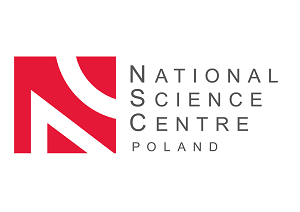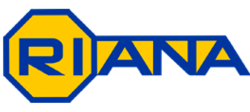Novel cellulose-based biosorbents in water treatment technologies:
role of the intermolecular and surface interactions
National Science Centre, project number: 2022/47/D/ST8/02389

Contamination of the environment with materials, especially plastics of micro-, submicro- and nanometric sizes create new challenges not only for the methodology of environmental analysis but also for the methods of removing those particles from aqueous solutions. The main research objective of this proposal is the design and development of a sustainable water purification process from micro- and nanoplastics using ionic liquids immobilized on biodegradable supports. Small plastic parts accumulate in the aquatic environment, causing serious health issues, mainly due to entering the food chain. Materials of nano-, micro-, and submicrometric size are used in a wide range of product areas, and in the case of plastics, these materials also arise from larger waste. An important environmental challenge is their detection and analysis of the type of material one is dealing with, the more that they occur in many forms, but can also be transferred by any transport: air, soil, and water. There is a methodological gap regarding the analysis of those pollutants and their removal. Functionalization of various supports with ionic liquids allows for easy change in their behaviour, therefore, change in their sorption capabilities. No literature reports indicate the use of ionic liquid functionalized cellulose, or any other biomass-derived material for that matter, as an example of materials used for micro/sub-micro/nanoplastics removal. Nevertheless, numerous examples show clearly the importance of cellulose materials in the removal process, and point out that the change of its surface functionality remains the future challenge to be tackled with.
The main goal of this project is to develop a method of removing micro- and nanomaterials from aqueous solutions using ionic liquid functionalized cellulose nanostructures. For this purpose, appropriate ionic liquids will be designed, which will then be attached to properly prepared substrates (cellulose nanostructures). The obtained materials will be subjected to structural characteristics and physicochemical, and then used in the process of water purification from standard solutions of nano-/ submicro-/micromaterials. The point of reference mustn't be an in-depth analysis of the type of pollution, but only a quantitative analysis of the removal of a given type of pollution by the appropriate material. The number of the obtained systems will allow, first of all, the creation of a wide library of materials, and will allow further modeling and design of the purification process of micro/sub-micro and nanoplastics.
The main benefit of the project will be the development of a material that removes micro- and nanoplastics, and the determination of the role of surface and intermolecular interactions affecting the effective purification of aqueous solutions. The newly designed materials could significantly contribute to the development of water purification techniques, and the determination of the impurity/sorbent interactions will allow for a better understanding of the removal of small polymer systems, and thus their more effective removal from the environment.

Research in the fields of nanoscience and nanotechnology is vital for sustainability globally: advancement in nanoscience and nanotechnology cannot be achieved without using research infrastructures (RI).
RIANA encompasses 7 European networks of top-level RIs to cover the most advanced techniques relevant for synthesis, nanofabrication, processing, characterization, analytics, as well as simulation capacity. Highly customised and efficient access to 69 infrastructures is coordinated via a single-entry point and enabled through comprehensive Science and Innovation Service by senior scientists, experts for the transfer of technology from academia to industry, and highly trained Junior Scientists. The Junior Scientist boost RI experience to an entirely new level: they provide customised Science Service supporting users from initial ideas to hands-on experiments, data analysis and dissemination of results to generate the greatest impact from access to world-class RI.
This core of RIANA is aligned to attract experienced and new users from academia or industry making their promising ideas a success and push them to higher TRL. RIANA is flexible to upcoming emergent scientific topics and needs: together with stakeholders from the nanocommunity, RIANA implements the opportunity to offer flexible access to additional infrastructures in, and even outside of Europe beyond the current consortium, and to direct the Science Service towards evolving user needs via additional specialised Junior Scientists.
Based on the four years of experience, the RIANA consortium will develop a roadmap for the future of the nanoscience and nanotechnology at European RIs.
More information can be found at the project website:
You can also contact us, as the local cooridinators.
Synthesis of mobile MOF materials
National Science Centre,
Head: Dr Patryk Florczak
1. AMU IDUB 116/07/POB3/0013
International Junior and Senior Exchange
Dr Roksana Markiewicz
2. AMU IDUB 116/07/POB3/0013
UAM Excellence Visiting Post-doctoral Researchers and UAM Excellence Visiting Professors
Dr Roksana Markiewicz
3. AMU IDUB 135/01/POB3/0002
UAM Excellence Visiting Post-doctoral Researchers and UAM Excellence Visiting Professors
Dr Roksana Markiewicz
The AMPERE Nuclear Magnetic Resonance School, is organized yearly by the Adam Mickiewicz University in Poznań, as a part of the Groupement AMPERE with Dr Roksana Markiewicz as the Head of the Organizing Committee.
The School is addressed to young scientists (post graduate students, PhD students and post-doctoral fellows) and is focused on theoretical and experimental aspects of NMR methods, as well as on application of NMR in nanoscience and nanotechnology.
All information about previous and future editions of the AMPERE NMR School can be found at the School's website:
This site was created with the Nicepage